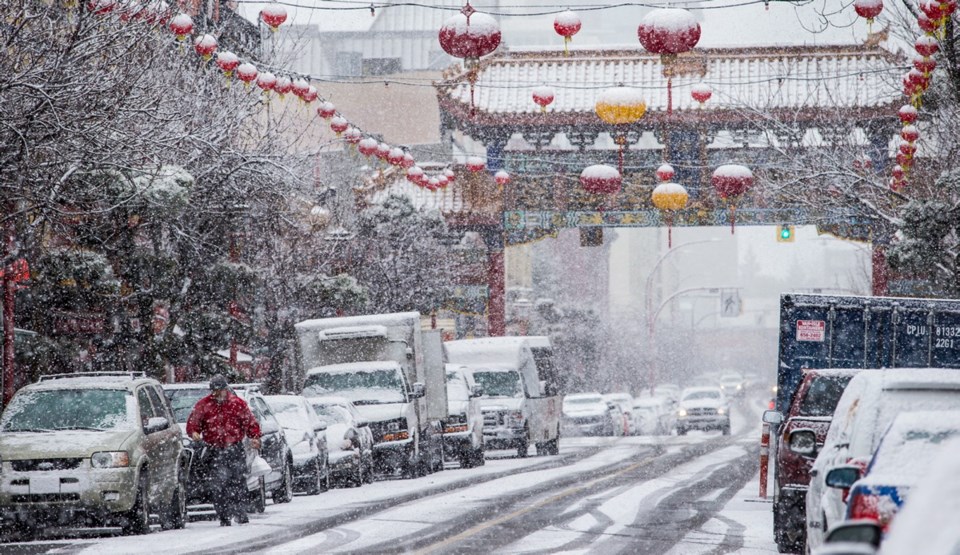This past winter might have seemed snowy, but it was far from the top ranks of the Victoria area’s snow seasons.
Despite some notable storm activity, the winter of 2016-17 ranks only 22nd on Environment Canada’s all-time list for snow accumulation. A total snowfall of 53.1 centimetres was registered through December, January and February at Victoria International Airport, the only spot for which snowfall statistics are available.
The all-time record is 148.4 cm, set in 1968-69. The winter of 1996-97 — which includes the Blizzard of ’96 — is No. 2 at 128.1 cm, said Environment Canada meteorologist Alyssa Charbonneau.
“It was interesting because we felt like we had such a snowy winter,” she said.
“It wasn’t necessarily the amount of snow that fell, a lot of it had to do with how much the snow stuck around.”
Still, the region exceeded 30.9 cm of snow — the average annual snowfall for the region, Charbonneau said.
More than anything, it was a colder-than-normal winter. The average temperature of 2.7 C, as compared to the normal of 4.6 C, made it the ninth-coldest winter on record.
The airport weather station recorded a low of -6.5 C in December, while temperatures at Gonzales weather station dipped to -3.8 C.
“We had quite a few Arctic outbreaks where that really cold air makes its way right over the coast,” Charbonneau said.
“We had prolonged periods of temperatures being below normal.”
Snow can fall in March — the average for the month is 3.4 cm — but it usually comes early in the month, she said.
Now that spring is a few days old, Charbonneau said the coming week and beyond look to be a period of normal daytime temperatures around 11 C. Overnight lows should be about 4 C.
“It seems like we’re getting back to where we’re supposed to be.”
Fraser Work, the City of Victoria’s director of engineering and public works, said crews did a good job of dealing with the weather. There will be the usual debrief to see if any improvements can be made to the process, he said.
“There’s lots of things that worked really well,” he said. “The equipment held up pretty good.”
There were also some challenges, he said.
“It was hard in some cases because you had a pretty bad flu season,” he said. “In some cases, we were short-staffed and then the weather was freeze-thaw, freeze-thaw, and that’s really difficult to keep on top of because you’re calling people in at the last minute or you’ve got a lot of people on standby to come in.
“If it rains one day and then freezes, we’ve got a totally different approach to if it stays dry and freezes.”
Work said that made for a “cumbersome” first few months of 2017.
“To be honest, I hope that’s the last of it.”
He noted that Victoria didn’t get hit as hard with snow as many other communities. “But it definitely was uncommon — fits and starts of cold weather and we had a lot of it in a row.”
The city’s annual $36,000 snow-removal budget was used up by mid-December, a few weeks before the 2017 budget kicked in on Jan. 1. The city has $1 million in contingency funds to draw from for to keep up with needs.
B.C. Hydro had a tough winter on Vancouver Island, said spokesman Ted Olynyk, with heavy, wet snow breaking branches and sending them onto power lines.
“And the ground was pretty saturated so conditions were ripe to cause a lot of grief to trees.”
Olynyk said there were issues all over the Island and the Gulf Islands.



